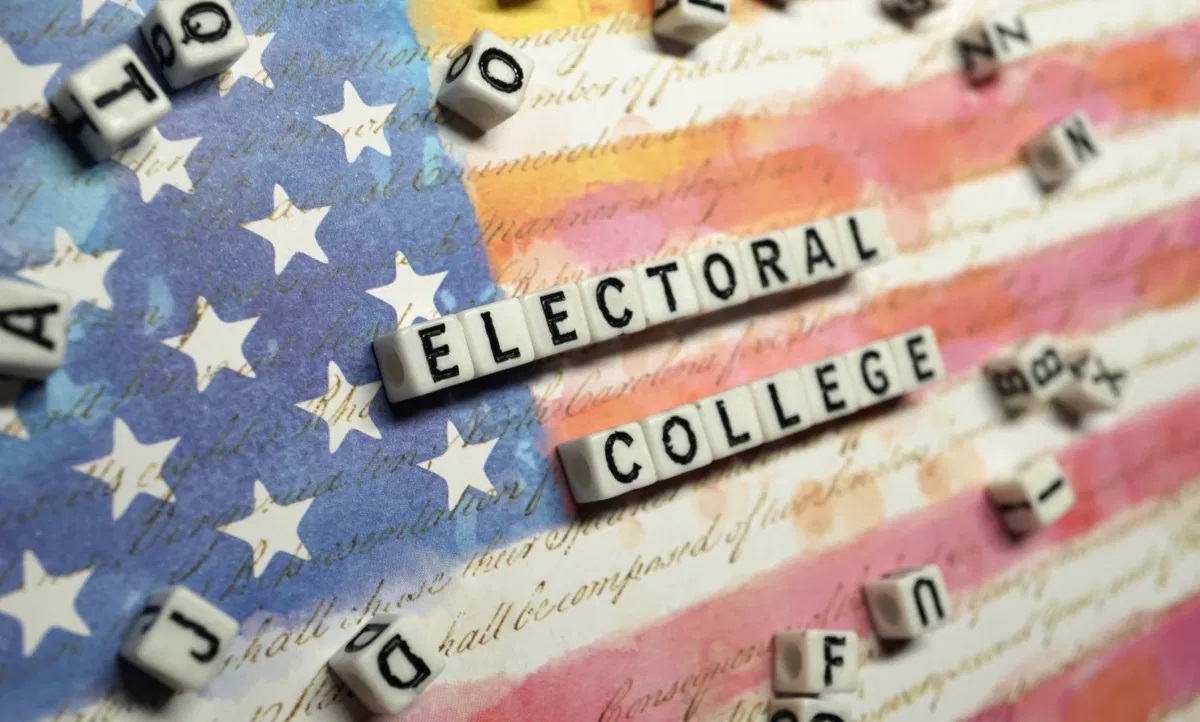Because the executive presidential system, which had been created in the United States, was adopted by Nigeria from the Second Republic on, many Nigerians think that the US Constitution and the Nigerian Constitution are the same.
In fact, there are a number of important differences between them.
One of these differences is the method of electing the president. While Nigerian presidents must obtain not only the most votes but also at least 25% of the vote in 2/3rds of the Nigerian states, American presidents are chosen by a complex, indirect election system dating back to the adoption of the current Constitution in 1787.
Each state in the US is allowed to choose a number of electors equal to their total representation in both houses of Congress. These electors then meet in December in each state to forward their votes for president to Congress, where they are counted in January, shortly before the inauguration of the next president.
The US’ Electoral College was adopted for several reasons. When the Constitution was first written, the Founding Fathers were making an experiment in popular, republican government.
They weren’t sure they could trust the masses of people to directly elect their president, and thus chose an indirect election system.
In addition, voting requirements were very different between the several states.
Most had property qualifications for voters, who were all male. These qualifications were different in different states.
Only eight of the thirteen original states allowed Catholics to vote. Five, including one where slavery was legal, allowed free blacks to vote.
Only four states allowed Jews to vote. A purely popular vote would have given states with looser voting qualifications more say than their counterparts with stricter qualifications.
The indirect election system known as the Electoral College was a means to ensure that a state’s power to choose the president was roughly equal to its size and importance in the federation, without giving states an incentive to liberalize their voting laws.
That would happen anyway as time went by and states grew in number and population, and as the American experiment in popular government succeeded and prospered.
As political parties emerged, the role of the Electoral College changed.
They were no longer wise elders who would employ their better judgement in the choosing of the president, but partisan loyalists who would faithfully vote for candidates.
The system had to be changed by the Twelfth Amendment to the Constitution after the election of 1800, when the institution assumed its present form.
Only once has the Electoral College failed to agree on a president. This was after the election of 1824, when a four-way race threw the election into the House of Representatives, where each state has only one vote for president.
Although it has only happened once it could always happen again.
Only rarely has the electoral college chosen a president who did not win at least a plurality of the popular vote. When this happened in the election of 1876, along with several other problems, the winning candidate, Rutherford Hayes, was dubbed “his fraudulency” by those opposed to him, and chose not to seek reelection.
In 1888, Benjamin Harrison also won the presidency without a popular vote plurality. In the next election, 1892, Harrison was defeated by Grover Cleveland, the president he had defeated in 1888.
Cleveland thus became the only US president to serve nonconsecutive terms in the presidency, and the first to win the popular vote three times in a row.
A disparity between the popular vote and the electoral college win did not take place again until the year 2000, when George W. Bush was chosen president despite losing the popular vote.
When Bush was reelected in 2004 he became the first popular vote loser to ever win reelection.
The most recent president, Donald Trump, may become the second if he wins the Electoral College vote in December.
A number of changes in the US have made a discrepancy between the Electoral College and the popular vote more likely. The population disparity between states with large populations, such as California, Texas, and New York, and states with smaller populations, such as Wyoming or Vermont, means that states with small populations have outsized influence, since representation in the US Senate is equal between the states, while representation in the House of Representatives is according to population.
Furthermore, most states choose their electors according to a “winner takes all” principle.
Thus a candidate with a narrow victory in several states could easily defeat a candidate who won the popular vote with overwhelming margins of victory in several large states.
This system is difficult to change not only because of the general difficulty of amending the US Constitution, but because of the advantage it gives to states with small populations, several of which would have to agree to abolish it.
Nevertheless, there are perennial attempts to alter or abolish the system.
The last serious attempt was in the 1960s, led by Senator Birch Bayh of Indiana, who had already twice led movements that amended the Constitution.
Even if the Electoral College is not abolished as a result of increasing disparities between its choices and the popular vote, it will surely remain controversial among Americans.
It has lasted for over two hundred years. However, unlike the executive presidency, which also originated in the Constitutional Convention of 1787, the United States’ specific Electoral College system of choosing a president has never been imitated elsewhere, despite the common existence of indirect elections around the world.
*John Edward Philips is Professor Emeritus, College of Humanities, Hirosaki University, Japan. The author of several books and articles about African history, he was a teaching assistant in US History at the University of California, Los Angeles in the 1980s.

 Join Daily Trust WhatsApp Community For Quick Access To News and Happenings Around You.
Join Daily Trust WhatsApp Community For Quick Access To News and Happenings Around You.


